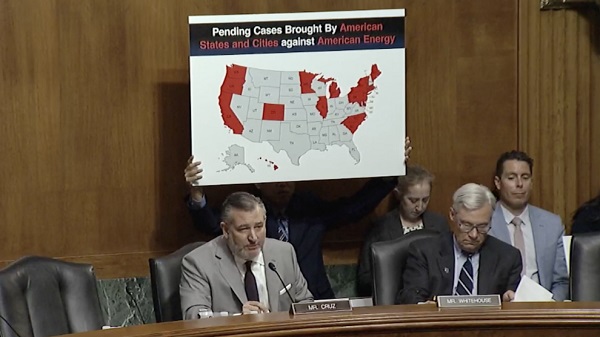Agriculture
What the USMCA Might Mean for Agriculture and Biotechnology?

We welcome guest writers to all of our Todayville platforms. Here’s a submission from Emily Folk. Emily is passionate about agricultural sustainability and more of her work can be found on her site, Conservation Folks. In this story, Emily Folk explains the USMCA Impact on Agriculture.
What Could USMCA Mean for Agriculture and Biotechnology?
The United States Mexico Canada Agreement (USMCA) has been in the news a lot lately. The leaders of the respective nations signed the trade agreement on November 30, 2019, and ratification is pending. You can think of the USMCA as an updated version of the North American Free Trade Agreement (NAFTA).
U.S. President Donald Trump vowed to renegotiate NAFTA after publicly speaking unfavourably about it. The USMCA is the result of that vow. The agreement spans several areas, such as the origin of automobile parts and new labor laws in Mexico that make it easier for workers to unionize. The USMCA also has a “sunset clause” that makes its terms expire after 16 years. Plus, every six years, the leaders of the countries involved must agree on whether to extend the deal.
Some agriculture-specific stipulations also exist within the USMCA. Additionally, the agreement notably mentions biotechnology. Here’s a closer look at how the USMCA might change these two industries.
More Exporting Opportunities for Farmers
One of the key points often mentioned about the USMCA is that parties expect the agreement to cause a $2 billion increase in U.S. agriculture exports, triggering a $65 billion rise in U.S. gross domestic product (GDP). Canada and Mexico are currently the top two exporting markets for American farmers, supporting more than 325,000 American jobs. In 2018, the food and agricultural exports destined for Canada and Mexico totaled more than $39.7 billion.
The USMCA also opens exporting opportunities that did not exist before. Now, U.S. dairy farmers will have expanded access to send products such as fluid and powdered milk, cheese and cream to Canadian parties. There will also no longer be U.S. tariffs on whey and margarine. This change is notable, considering the Canadian dairy market produced roughly 17% of the United States’ annual output over the past three years.
In exchange, Canada will give the United States new access to chicken and eggs, plus increased access to turkey. Plus, all other agriculture products traded between the U.S. and Mexico will be under a zero-tariff model.
Moving Forward With Agricultural Biotechnology
Another improvement associated with the USMCA is that it looks at agricultural technology more broadly than other trade agreements have.
For example, the Trans-Pacific Partnership — a proposed trade agreement between 12 nations — only addressed biotechnology regarding recombinant DNA (rDNA). That process involves joining the molecules from two different species, then inserting the product into a host to create new genetic combinations. Instead, the USMCA opens possibilities for all kinds of agricultural technology, including gene editing. Moving ahead with biotechnology could be crucial for addressing pressing matters that affect agriculture, such as water scarcity.
Approximately 700 million people suffer from water scarcity, and that number could double by 2025. Also, the agriculture industry is the greatest user of water. Things must change — both to address the growing water scarcity problem and to give farmers more options for growing things without using so much water.
Biotechnology has already helped, and it seems highly likely to continue spurring progress. In one example, scientists altered the expression of one gene common to all plants. This change led to a 25% increase in the plants’ water-use efficiency without adversely impacting yield or photosynthesis.
As part of the USMCA, Mexico, Canada and the United States agreed to improve information sharing and cooperation about biotechnology matters related to trade. That change could speed new developments, resulting in positive outcomes for all involved groups and the world at large.
Fairer Agricultural Grading Standards
A grading system for agricultural products defines trading procedures. For example, commercial buyers of a product grown in another country refer to the grading standards to set expectations about a product’s quality. The USMCA specifies that Canada will evaluate U.S. imported wheat and assign it a grade no less favourable than it would give Canadian-grown wheat.
Canada will also no longer require country of origin statements associated with inspection certificates or quality grades. The United States and Canada will discuss issues related to seed regulations under the USMCA, too.
Concerning Mexico and the United States, the two countries agreed to non-discriminatory grading standards and services. Moreover, a dialogue will begin between the two countries to flesh out the details for quality standards and grading regarding trade.
A Promising Future
It’s too early to say what the real-life effects will be of the changes outlined here. But, the commitments laid out within the USMCA seem like they’ll represent clear improvements for agriculture professionals, as well as everyone who benefits from their goods.

I’m Emily Folk, and I grew up in a small town in Pennsylvania. Growing up I had a love of animals, and after countless marathons of watching Animal Planet documentaries, I developed a passion for ecology and conservation. You can read more of my work by clicking this link: Conservation Folks.
Extreme Weather Patterns Causing State of Agricultural Emergency in Canada
Agriculture
Lacombe meat processor scores $1.2 million dollar provincial tax credit to help expansion

Alberta’s government continues to attract investment and grow the provincial economy.
The province’s inviting and tax-friendly business environment, and abundant agricultural resources, make it one of North America’s best places to do business. In addition, the Agri-Processing Investment Tax Credit helps attract investment that will further diversify Alberta’s agriculture industry.
Beretta Farms is the most recent company to qualify for the tax credit by expanding its existing facility with the potential to significantly increase production capacity. It invested more than $10.9 million in the project that is expected to increase the plant’s processing capacity from 29,583 to 44,688 head of cattle per year. Eleven new employees were hired after the expansion and the company plans to hire ten more. Through the Agri-Processing Investment Tax Credit, Alberta’s government has issued Beretta Farms a tax credit of $1,228,735.
“The Agri-Processing Investment Tax Credit is building on Alberta’s existing competitive advantages for agri-food companies and the primary producers that supply them. This facility expansion will allow Beretta Farms to increase production capacity, which means more Alberta beef across the country, and around the world.”
“This expansion by Beretta Farms is great news for Lacombe and central Alberta. It not only supports local job creation and economic growth but also strengthens Alberta’s global reputation for producing high-quality meat products. I’m proud to see our government supporting agricultural innovation and investment right here in our community.”
The tax credit provides a 12 per cent non-refundable, non-transferable tax credit when businesses invest $10 million or more in a project to build or expand a value-added agri-processing facility in Alberta. The program is open to any food manufacturers and bio processors that add value to commodities like grains or meat or turn agricultural byproducts into new consumer or industrial goods.
Beretta Farms’ facility in Lacombe is a federally registered, European Union-approved harvesting and meat processing facility specializing in the slaughter, processing, packaging and distribution of Canadian and United States cattle and bison meat products to 87 countries worldwide.
“Our recent plant expansion project at our facility in Lacombe has allowed us to increase our processing capacities and add more job opportunities in the central Alberta area. With the support and recognition from the Government of Alberta’s tax credit program, we feel we are in a better position to continue our success and have the confidence to grow our meat brands into the future.”
Alberta’s agri-processing sector is the second-largest manufacturing industry in the province and meat processing plays an important role in the sector, generating millions in annual economic impact and creating thousands of jobs. Alberta continues to be an attractive place for agricultural investment due to its agricultural resources, one of the lowest tax rates in North America, a business-friendly environment and a robust transportation network to connect with international markets.
Quick facts
- Since 2023, there are 16 applicants to the Agri-Processing Investment Tax Credit for projects worth about $1.6 billion total in new investment in Alberta’s agri-processing sector.
- To date, 13 projects have received conditional approval under the program.
- Each applicant must submit progress reports, then apply for a tax credit certificate when the project is complete.
- Beretta Farms has expanded the Lacombe facility by 10,000 square feet to include new warehousing, cooler space and an office building.
- This project has the potential to increase production capacity by 50 per cent, thereby facilitating entry into more European markets.
Related information
Agriculture
Canada’s supply management system is failing consumers

This article supplied by Troy Media.
The supply management system is cracking. With imports climbing, strict quotas in place and Bill C202 on the table, we’re struggling to feed ourselves
Canada’s supply management system, once seen as a pillar of food security and agricultural self-sufficiency, is failing at its most basic function:
ensuring a reliable domestic supply.
According to the Canadian Association of Regulated Importers, Canada imported more than 66.9 million kilograms of chicken as of June 14, a 54.6 per cent increase from the same period last year. That’s enough to feed 3.4 million Canadians for a full year based on average poultry consumption—roughly 446 million meals. Under a tightly managed quota system, those meals were supposed to be produced domestically. Instead imports now account for more than 12 per cent of this year’s domestic chicken production, revealing a growing dependence on foreign supply.
Supply management is Canada’s system for regulating dairy, poultry and egg production. It uses quotas and fixed prices to match domestic supply with demand while limiting imports, intended to protect farmers from global price swings and ensure stable supply.
To be fair, the avian influenza outbreak has disrupted poultry production and partially explains the shortfall. But even with that disruption, the numbers are staggering. Imports under trade quotas set by the World Trade Organization, the Canada-United States Mexico Agreement and the Comprehensive and Progressive Agreement for Trans-Pacific Partnership are running at or near their allowable monthly share—known as pro-rata
levels—signalling not just opportunity, but urgency. Supplementary import permits, meant to be used only in emergencies, have already surpassed 48 million kilograms, exceeding total annual import volumes in some previous years. This isn’t a seasonal hiccup. It’s a systemic failure.
The system, designed to buffer domestic markets from global volatility, is cracking under internal strain. When emergency imports become routine, we have to ask: what exactly is being managed?
Canada’s most recent regulated chicken production cycle, which ended May 31, saw one of the worst shortfalls in over 50 years. Strict quota limits stopped farmers from producing more to meet demand, leaving consumers with higher grocery bills and more imported food, shaking public confidence in the system.
Some defenders insist this is an isolated event. It’s not. For the second straight week, Canada has hit pro-rata import levels across all chicken categories. Bone-in and processed poultry, once minor players in emergency import programs, are now essential just to keep shelves stocked.
And the dysfunction doesn’t stop at chicken. Egg imports under the shortage allocation program have already topped 14 million dozen, a 104 per cent jump from last year. Not long ago, Canadians were mocking high U.S. egg prices. Now theirs have fallen. Ours haven’t.
All this in a country with $30 billion in quota value, supposedly designed to protect domestic production and reduce reliance on imports. Instead, we’re importing more and paying more.
Rather than addressing these failures, Ottawa is looking to entrench them. Bill C202, now before the Senate, seeks to shield supply management from future trade talks, making reform even harder. So we must ask: is this really what we’re protecting?
Meanwhile, our trading partners are taking full advantage. Chile, for instance, has increased chicken exports to Canada by more than 63 per cent, now accounting for nearly 96 per cent of CPTPP-origin imports. While Canada doubles down on protectionism, others are gaining long-term footholds in our market.
It’s time to face the facts. Supply management no longer guarantees supply. When a system meant to ensure resilience becomes a source of fragility, it’s no longer an asset—it’s an economic liability.
Dr. Sylvain Charlebois is a Canadian professor and researcher in food distribution and policy. He is senior director of the Agri-Food Analytics Lab at Dalhousie University and co-host of The Food Professor Podcast. He is frequently cited in the media for his insights on food prices, agricultural trends, and the global food supply chain.
Troy Media empowers Canadian community news outlets by providing independent, insightful analysis and commentary. Our mission is to support local media in helping Canadians stay informed and engaged by delivering reliable content that strengthens community connections and deepens understanding across the country.
-

 armed forces1 day ago
armed forces1 day agoCanada’s Military Can’t Be Fixed With Cash Alone
-

 International1 day ago
International1 day agoTrump transportation secretary tells governors to remove ‘rainbow crosswalks’
-

 Business1 day ago
Business1 day agoCanada’s loyalty to globalism is bleeding our economy dry
-

 Alberta1 day ago
Alberta1 day agoCOVID mandates protester in Canada released on bail after over 2 years in jail
-

 Business1 day ago
Business1 day agoCarney’s spending makes Trudeau look like a cheapskate
-

 Alberta1 day ago
Alberta1 day agoAlberta Next: Alberta Pension Plan
-

 Crime2 days ago
Crime2 days agoProject Sleeping Giant: Inside the Chinese Mercantile Machine Linking Beijing’s Underground Banks and the Sinaloa Cartel
-

 C2C Journal22 hours ago
C2C Journal22 hours agoCanada Desperately Needs a Baby Bump








You must be logged in to post a comment Login